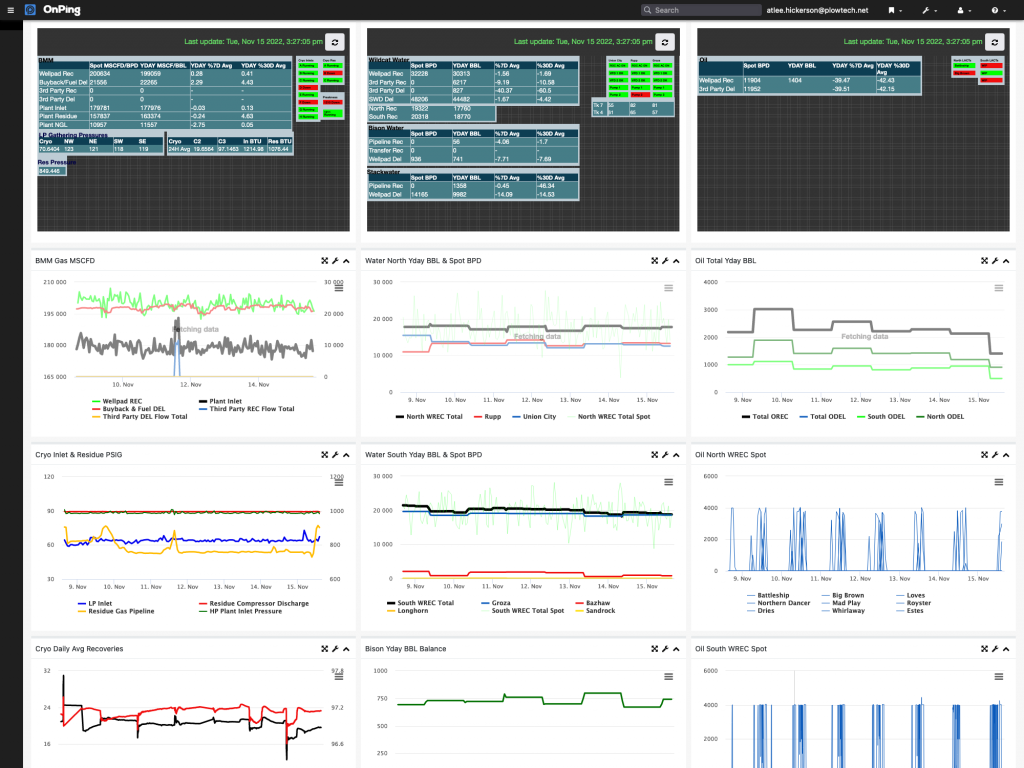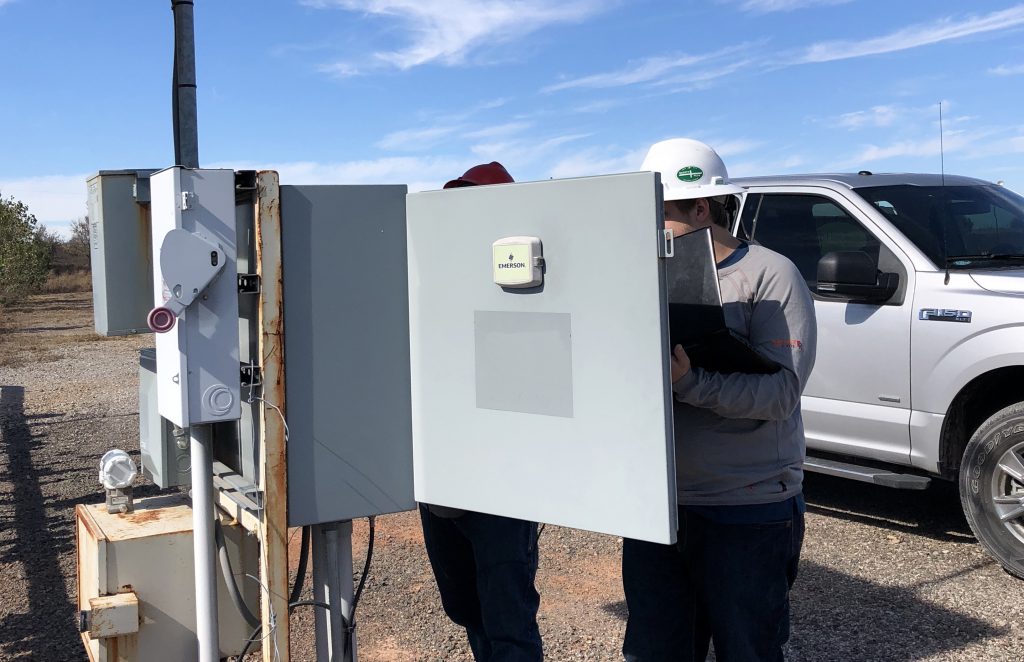Oil and Gas SCADA is Different
Oil and Gas SCADA is hardly a new concept. But if you talk to operators of Oil and Gas companies you will hear such similar frustrations. The issues faced at Midstream companies, Exploration and Production companies and Saltwater Disposal companies have a lot in common. Below is an explanation of common problems that everyone has with SCADA systems, why these problems are so common and what are some of the ways they can be mitigated.
What is Oil and Gas SCADA?
When you want to get data from a machine and put it somewhere else that is a sign you are looking for Oil and Gas SCADA… SCADA stands for Supervisory Control and Data Acquisition. When it was first conceived, it was a way of getting data from different pieces of equipment into a single location for analysis and adjustment. In Oil and Gas this purpose isn’t too different. The primary challenges have to do with the pace and difficulties of the environment where the Oil and Gas industry operates.
What does Oil and Gas SCADA Look like?
The most important elements of Oil and Gas SCADA are centered around site safety. There are immense operating pressures, particularly around the wellhead. Modern hosted or cloud oilfield SCADA allows lease operators to monitor these pressures remotely.
In addition to pressure concerns there is heavy equipment that is often operating in some sort of automated fashion. This can include, among other things… horizontal pumps, flare stacks or compressors. If something fails to start or fails to stop in one of these automated loops, operators need to know quickly. SCADA in the Oilfield makes this much easier. In OnPing, for instance, these
Alerts come in by call, email or text.
The last set of safety concerns has to do with environmental safety. Tank overruns are much easier to avoid if you have a set of sensors that can let you know where the fluid level in a tank is. There are several sorts of sensors. It is common to use sensors that can tell where the water in a tank ends and the oil in a tank begins.
Knowing your production numbers is a key component for Oilfield SCADA systems. These systems allow for reporting how much oil and gas is being produced. Many systems allow you to view this data in ways that combine wells, pads or even fields so you can get a solid understanding of the performance of your company.

Many Oilfield SCADA systems allow integration with other oilfield software systems like production accounting or management systems.
What sort of features do SCADA systems have?

When people refer to SCADA they typically are thinking of features like:
Alarms and Alerts – Call, Email, Text and other alerting systems based on conditions.
Data Ingestion – drivers for devices, graceful recovery from error, missing data management
Data Backup – offsite storage, data recovery
System Control – Set point manipulation, status changes
Current State Data Visualization – HMI’s, Tables, and Gauges
Historical Visualization – Line Graphs, Historical Tables
Reporting – Reports that can be sent on a scheduled basis
Data Transformation – Parameter arithmetic like div by 10 or combining multiple values into 1.
What features are more specific to Oil and Gas SCADA?
These features are generally common in Oil and Gas SCADA systems but less so in others.
Latency Recovery – Sophisticated comm loss recovery due to remote locations of sites
Low Power Data Gathering – The ability to get data from sites that are power constrained
Mapping – Driving directions, Geospatial iconography, data tie-ins for mapped values.
What kind of devices feed into Oilfield SCADA?

Generally speaking tank levels, flow rates, and volumes are calculated by a mix of PLC (Programmable Logic Controllers) and Flow Measurement Computers. Common PLC brands include Allen Bradley and Siemens. Common Flow Measurement devices include ABB and Emerson devices. There are dozens of other makes and models of sensor and equipment in the oilfield and it is important for Oil and Gas SCADA platforms to support these industry specific devices.
Once the data is in these devices this data needs to be connected to computers, usually computers hosted in the cloud or in control centers. This process is usually made possible by cell modems, satellite modems and radios.
What makes Oil and Gas SCADA so difficult?
Up until now we have painted a rosy picture of data being collected and distributed. But if you talk to almost anyone in this industry you will hear the same complaints over and over. Let’s go over a few!
WOSSO: Waiting on some s#$@ in an Office
When you consider what is happening with any oil and gas SCADA system, it is natural to make the control and configuration of this system as centralized as the data. The only problem with this is that all the people out on the field who actually know what is wrong are stuck emailing or calling people to get values changed or updated.
Some of this is unavoidable but there just isn’t enough focus in most Oil and Gas SCADA systems on eliminating it where you can. If you want to go fast, keep control in the field. Fast is what the oilfield is all about. This is one of the killer advantages of OnPing. The I&E techs are empowered to fix problems on the spot.
This site is exactly the same… except
Any experienced I&E or automation technician will know exactly what that sentence means. It means who knows what you are going to find on site. You were told 3 tanks but there are 4. Look, it is one of those surprise split connects that seem to always happen. OnPing is used in a lot of other industries, the oilfield may not be the only industry that generates spontaneous equipment but it sure seems to happen here the most.
So what happens when this happens, well we go back to the WOSSO step. This is the worst step and should be avoided at all costs. To avoid it, a few things need to be in place. First everything that can be fixed locally should be. This should include:
Getting all the values in correctly
Getting all the alarms in correctly
TESTING ALL THE CONTROLS
Of course, this is all possible in OnPing. You can build all of the pieces in OnPing.
Why don’t they find Oil somewhere nice?
It isn’t just the pace and constant surprise that makes the challenge of providing reliable Oil and Gas SCADA to the oilfield so tough. The sites are usually quite remote and often quite spread out. The environment is often too hot or too cold for equipment to maintain reliability. There is dirt, dust and well… Oil. It gets everywhere and takes its toll.
To deal with the environment you of course need rugged equipment. Even still, things break and have to be replaced. This often wreaks havoc on SCADA, a meter is changed with a different meter with a different brand. A PLC is swapped out so now there are 2 different data streams.
Well designed Oil and Gas SCADA systems should have ways to manage equipment change and remote access to this equipment. Either as part of the software or at least as part of the management program for it.
Plow’s Technicians and our Automation partners, rely heavily on several parts of OnPing to get up and running after outage events. Remote access to equipment using our built in VPNs, cloud backup of all configurations of equipment and easy and builtin driving directions and mapping for all sites are a few of the things that are super helpful in a pinch!
OnPing is very good at this
There are lots of ways to build good oil and gas SCADA platforms, and OnPing is one of them.
Our customers probably still want everything faster because well… Oilfield. But they tell us and will tell you that OnPing makes their lives easier. Isn’t that what all this technology is supposed to do?

